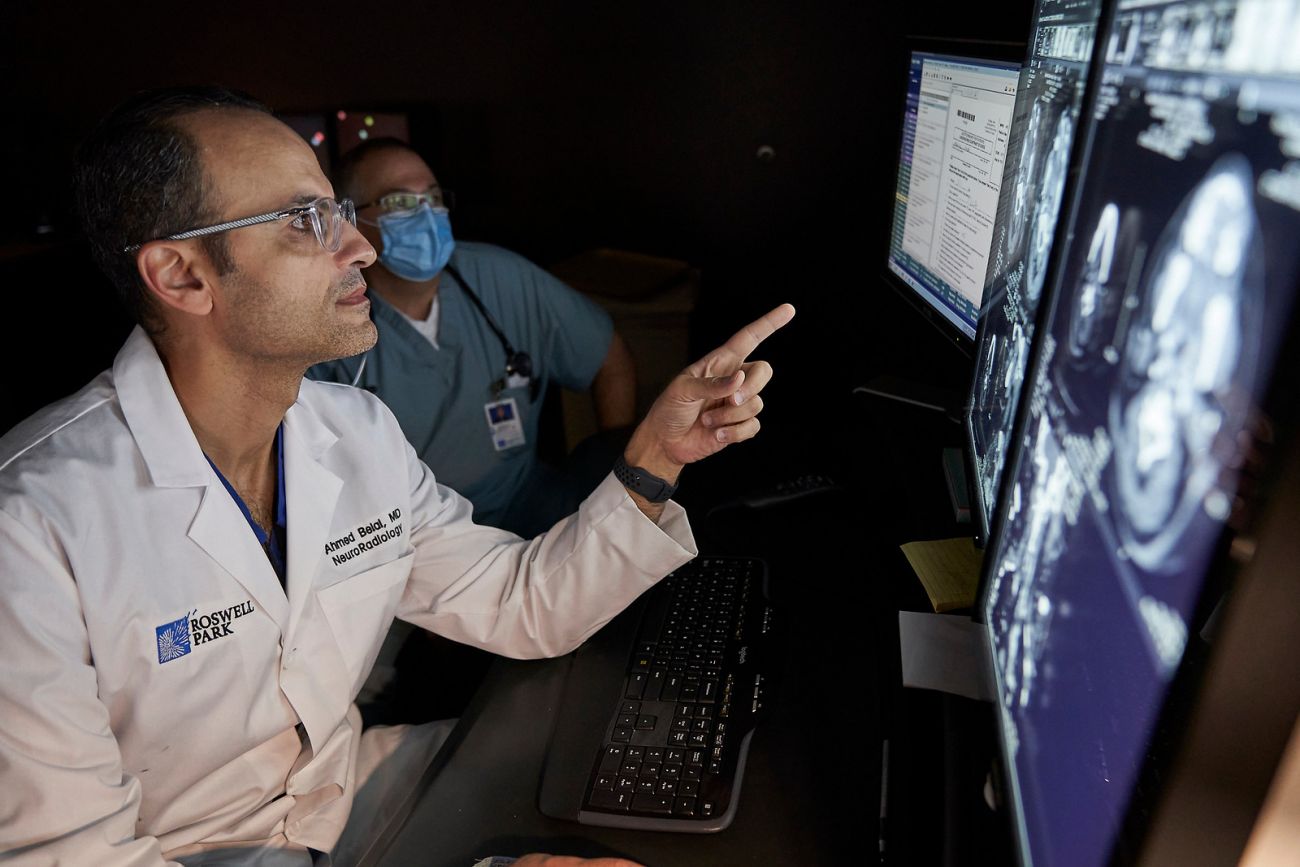Tumors of the head and neck can be difficult to detect in the early stages, and this can be even more complicated if they are in different locations. Combining information from several kinds of tests will help your doctors zero in on the tumors, determine whether they are malignant (cancerous) or benign (non-cancerous), and develop the treatment plan that will work best for you.
The process begins when a doctor reviews your medical history. Then you will undergo a full head and neck physical exam as the doctor checks your mouth, nose, neck, larynx (voice box), thyroid and face for any unusual lumps or masses.
Additional tests may include:
- Biopsy. Removing a small sample of the abnormal tissue for a pathologist to examine under a microscope to check for cancer cells. A biopsy is the only sure way to know if a tumor is cancerous.
- Fine needle aspiration. This is a special type of biopsy performed on neck masses or lumps. A needle is passed through the skin into the lump to get a sample of the tumor. A pathologist then examines the tissue under a microscope to check for cancer cells.
- Core needle biopsy. This procedure uses a slightly wider, hollow needle (compared the fine needle biopsy) to obtain a larger piece of tissue for analysis.
- X-rays such as chest X-rays, dental X-rays, panorex (X-ray of the entire jaw) or barium swallow (to evaluate the esophagus, or food pipe).
- Other Imaging. Scans such as CT, MRI or PET scan. A radiologist will conduct these diagnostic imaging tests to help locate and stage the tumor.
